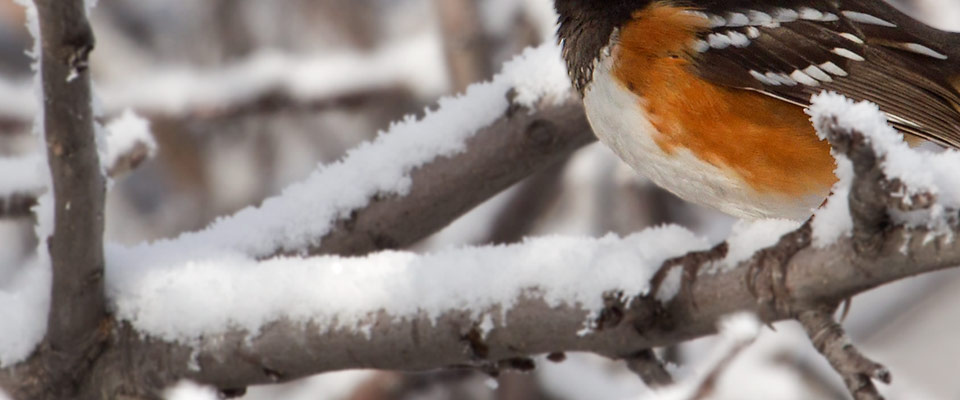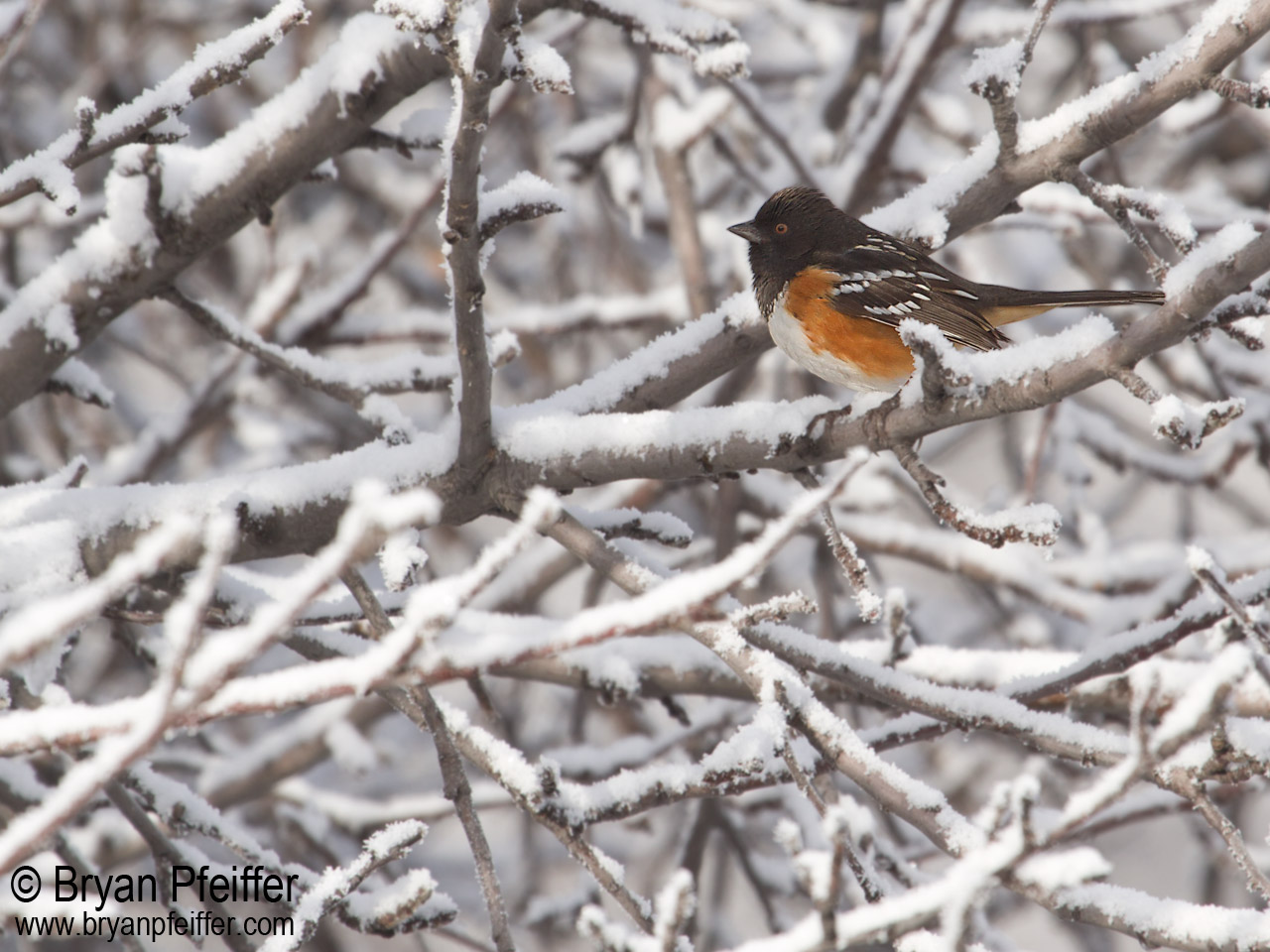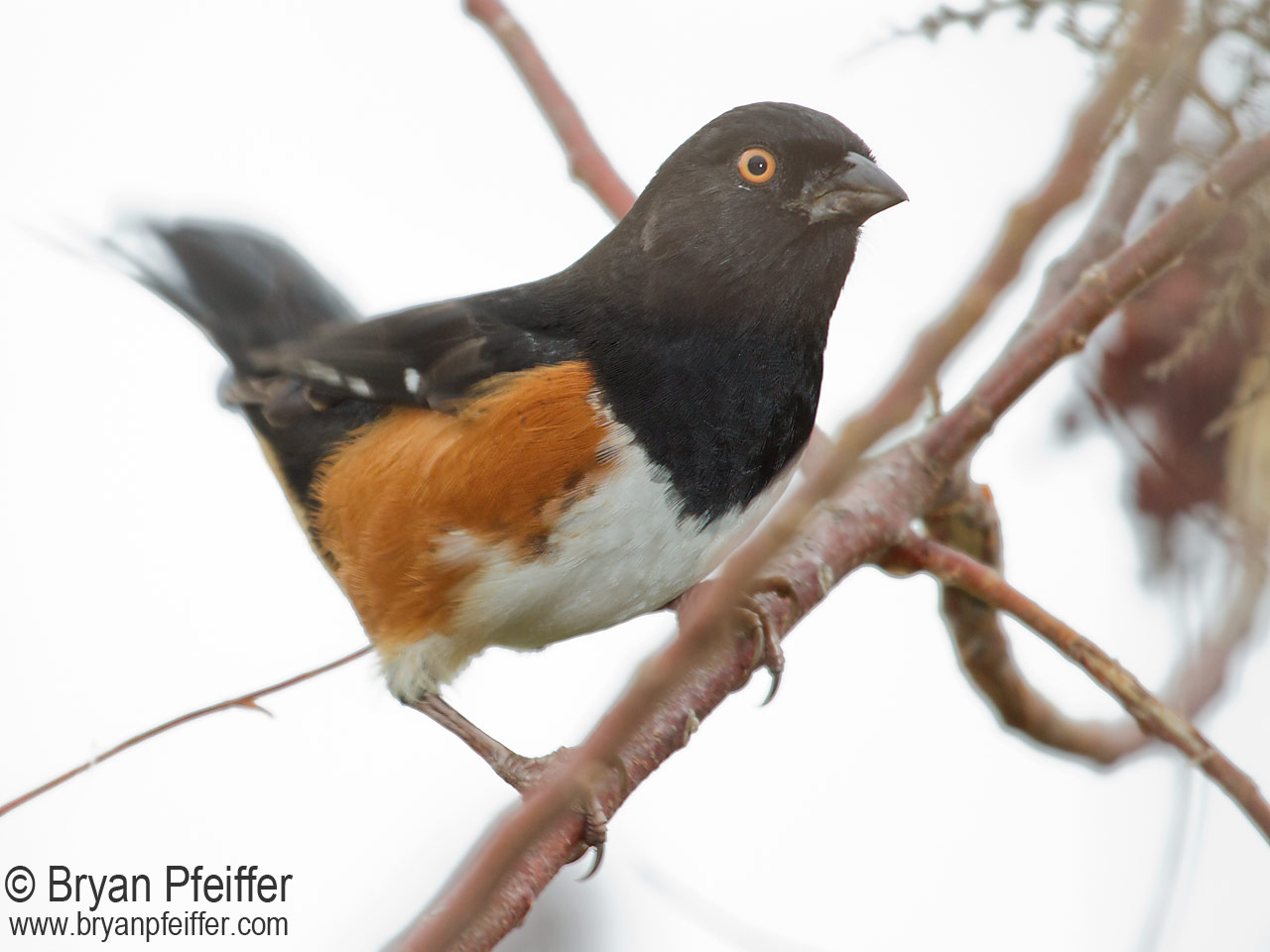What’s This? No. 20
STOP THE PRESSES. Grab the kids. Turn off the football game. My What’s This? nature challenge is back after a long break. The first person to name this organism wins $5 off any of my outings or lectures. I shot this one today in southwestern New Mexico. Yeah, it snowed here in the desert last night. More on that later. (It’s friggin’ gorgeous.)
Put your entry in the comments below. I’ll post the correct entries on Sunday (but not incorrect entries — so fear not). See the 19 other What’s This? challenges here. (Careful: answers are there too.)
ADDED JANUARY 4: We have a winner (well, two winners): Ruth Einstein, writing from Vermont, was first to identify this bird as Spotted Towhee (Pipilo maculatus), the western cousin of the Eastern Towhee. But Ruth, my partner, is disqualified because, well, because these kinds of contests usually have disclaimers about family members winning. (Plus, Ruth was out here in the Southwest with me for a month.) Our next correct answer came from Judy (using only her first name, which is fine). Lots of you got this one, so my next What’s This? will be tough.
Those of you who named Rufous-sided Towhee might need to upgrade your birding field guide. We now recognize Spotted Towhee and Eastern Towhee as two separate species (formerly considered Rufous-sided Towhee). The split happened in 1995 (when many of us got life birds from the sofa). Some of the essential research on towhee taxonomy was done back in the 1950s and 1960s by George Sibley and Fred Sibley. Fred, now probably well into his 70s, spends much of his time chasing dragonflies (he’s come to his senses), is father of David Sibley, and is one of the nicest most engaging people you will ever meet. (Can’t believe I don’t have a photo of Fred and Peggy, a retired librarian.)
Here’s our bird, distinguished from the Eastern Towhee mostly by those spots on the wing coverts and scapulars (shoulder blades, if you will). But keep reading for more intrigue on these messy towhees and Sibleys.
Here’s the thing about life on Earth — it’s not always so easily defined or stable. As it turn out, the earth has been shifting beneath the taxonomy of towhees for a century. At one point we recognized three distinct and geographically separated populations of these so-called spotted towhees — in Mexico, Saskatchewan, and California — each named as different species in the genus Pipilo.
You should feel happy that we now recognize only two formal North American species in this group. Within that Spotted Towhee complex, you’ll find at least nine subspecies (four subspecies of Eastern Towhee). They’re told apart — or not — by differences in the color of their plumage, the extent of their tail-spots, the length of the tails or wings, and the size of the bill and feet. (I myself usually don’t bother.)
If that isn’t crazy enough, a ton of the towhee work, as I had mentioned, came from Charles G. Sibley (1917-1998), who was at one time a graduate advisor — but unrelated — to Fred Sibley (David’s dad). Fred and Charles co-authored papers on towhees. It’s hard enough sorting out towhees, let alone Sibleys.
This edition of What’s This? drew 46 entries – a record. Those who got it right are listed below. Congratulations! And here’s an Eastern Towhee (lacking most of the spots) for good measure
[By the way, if you like what you see here on the blog, sign up for my email newsletter Natural Selections, which features fresh-picked news from the frontiers of wildlife science and from my own adventures in wild places.]




Spotted Towhee male.
Say what you like about obsessionist bird taxonomists and their name games, “rufous sided towhee” has a much nicer and more descriptive flair than “eastern towhee.” BO-ring. Why not refer to the eastern as rufous sided? Makes a nice descriptive companion name to the spotted towhee. Oh well, label me bad loser.
I’m in with the Spotted Towhee
looks like a spotted towhee to me, too
Spotted Towhee
Is it a Spotted Towhee?
spotted towhee
Depends on who you believe? Follow?
Personally I’d call it a Rufous Spotted Towhee.
But when in the desert be like the desert dwellers and call it a Spotted Towhee.
That looks like a Rufous-sided Towhee, Western race. Very pretty.
Spotted towhee
I think this is a Spotted Towhee
Spotted Towhee
This is a Spotted Towhee. Its cousin, the Eastern Towhee is very common here in SW VA
Spotted Towhee
Could it be a Spotted Towhee?
Spotted towhee?
Spotted Towhee
Our guess, based on a quick study of Sibley’s, is a Spotted Towhee. Hope you are having fun out there.
Spotted Towhee?
Spotted Towhee
spotted towhee.
Spotted Towhee
Spotted Towhee
Spotted Towhee.
Spotted Towhee
Male Spotted Towhee
Spotted Towhee?
Spotted towhee
Spotted Towhee
Spotted Towhee
Sorry, its a Spotted Towhee
This is a Spotted Towhee (Papilo maculatus)!
Spotted Towhee?
Spotted towhee!
looks like a spotted towhee
Uh, is it a spotted Towhee? Do I win?